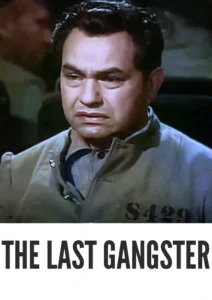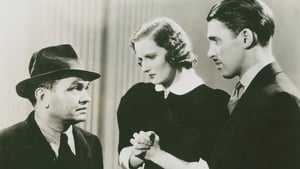Video Sources 0 Views
- Watch trailer
- The Last Gangster


Synopsis
Table of Contents
ToggleFrom Black and White to Vivid Color: The Last Gangster (1937)

Step back into the turbulent Prohibition era with The Last Gangster, a gripping crime drama from 1937, brilliantly colorized to immerse you in its stark reality. Starring Edward G. Robinson, this film explores the themes of redemption, family, and the brutal consequences of a life of crime. This HD download offers a chance to see a pre-code era gangster classic, also known as * বস* (Boss), like never before, making it perfect for fans of classic cinema and those fascinated by the dark underbelly of American history.
The Last Gangster Storyline: A Mobster’s Fall and Fight for Redemption
The Last Gangster tells the story of Joe Krozac (Edward G. Robinson), a notorious gangster who rises to power during the Prohibition era. At the height of his criminal career, Joe is apprehended and sentenced to a long prison term, leaving behind his wife, Lois, and the son he has never met.Upon his release, Joe finds himself in a dramatically changed world. Lois has remarried and his son knows nothing of his father’s past. Determined to reconnect with his family and leave his criminal life behind, Joe faces a difficult path to redemption. However, his past comes back to haunt him as old enemies and new threats emerge, forcing him to confront the consequences of his actions. The Last Gangster is a powerful tale of a man caught between his violent past and his desire for a better future.
Movie Cast
The Last Gangster boasts a stellar cast, bringing depth and intensity to this compelling story:
- Edward G. Robinson as Joe Krozac
- James Stewart as Paul North
- Rose Stradner as Lois
- Lionel Stander as Curly
- Eduardo Ciannelli as Caesar Enrico Bandello
Movie Genre
The Last Gangster is a crime drama set against the backdrop of the Prohibition era. It delves into themes of crime, punishment, and redemption, capturing the gritty realism and moral complexities of the time.
Historical Context: The End of Pre-Code Cinema
Released in 1937, The Last Gangster reflects the changing landscape of American cinema as the Pre-Code era came to an end. This period, known for its more daring and morally ambiguous content, gave way to stricter censorship under the Hays Code. The Last Gangster offers a glimpse into the themes and styles that defined Pre-Code cinema, showcasing the raw and unfiltered storytelling that characterized the era.
Colorization Details
This colorized version of The Last Gangster has been meticulously restored using modern digital techniques, enhancing the visual appeal while preserving the film’s original atmosphere of grit and tension. The colorization process involved careful analysis of the grayscale tones of the original black and white footage and assigning appropriate colors to each scene. This painstaking process brings new life to the characters and settings, making the story even more engaging for modern audiences. While some may debate the merits of colorizing classic films, it introduces these films to a broader audience, ensuring their legacy for future generations.
Technical Details
- Director: Edward Ludwig
- Screenplay: John Stone
- Story: William R. Burnett
- Cinematography: J. Peverell Marley
- Edited by: William Holmes
- Production Company: Twentieth Century Fox
- Distributed by: 20th Century Fox
- Runtime: 81 minutes
Technical Specifications
- Download Format: MP4
- Resolution: HD (1080p)
- Compatibility: Compatible with most devices, including smartphones, tablets, computers, and smart TVs.
Reviews and Critical Reception
The Last Gangster (1937) is a classic gangster film that showcases Edward G. Robinson’s talent for portraying complex and compelling characters. The film’s exploration of crime, redemption, and family has resonated with audiences and critics alike, cementing its place in the history of American cinema.
FAQs
- Q: What is The Last Gangster about?
- A: The Last Gangster tells the story of a notorious gangster’s struggle to reconnect with his family after serving a long prison sentence.
- Q: Is The Last Gangster (1937) a well-known gangster film?
- A: Yes, The Last Gangster is a recognized classic in the gangster film genre, known for its compelling story and strong performances.
- Q: Is this version of The Last Gangster colorized?
- A: Yes, this version has been professionally colorized to enhance the viewing experience.
- Q: What makes The Last Gangster interesting for classic film fans?
- A: The Last Gangster offers a glimpse into the Pre-Code era of American cinema and features a powerful performance by Edward G. Robinson.
- Q: What is the download format?
- A: The download format is MP4, which is compatible with most devices.
- Q: What resolution is the download?
- A: The resolution is HD (1080p), providing a high-quality viewing experience.
Download Now in HD!
Watch The Last Gangster Today!











